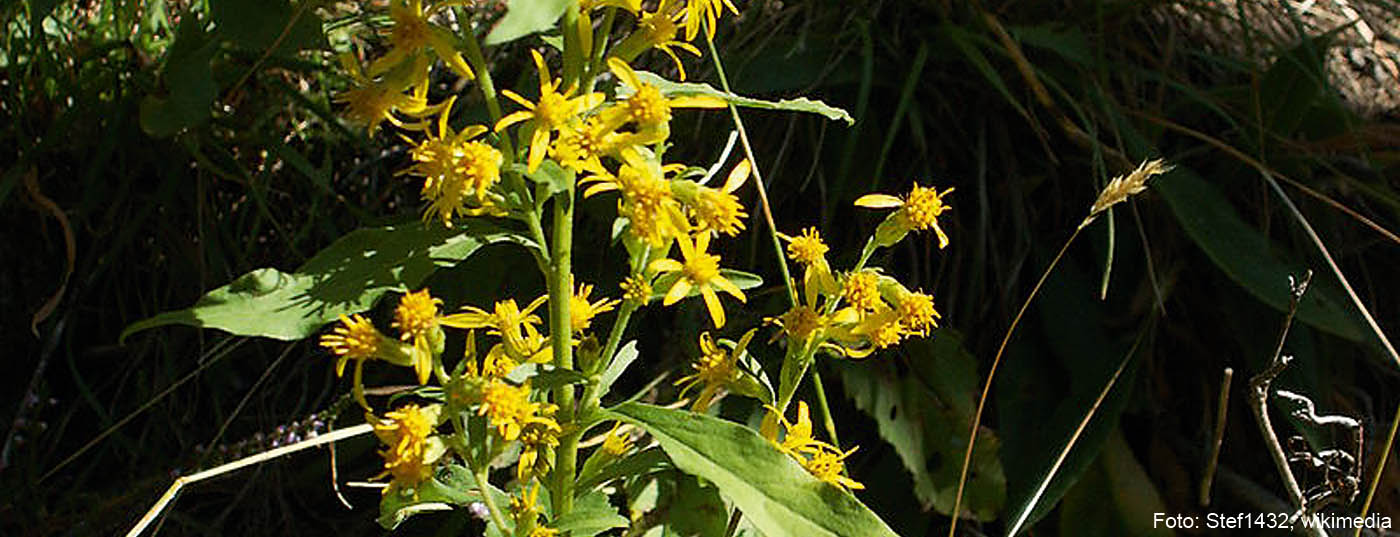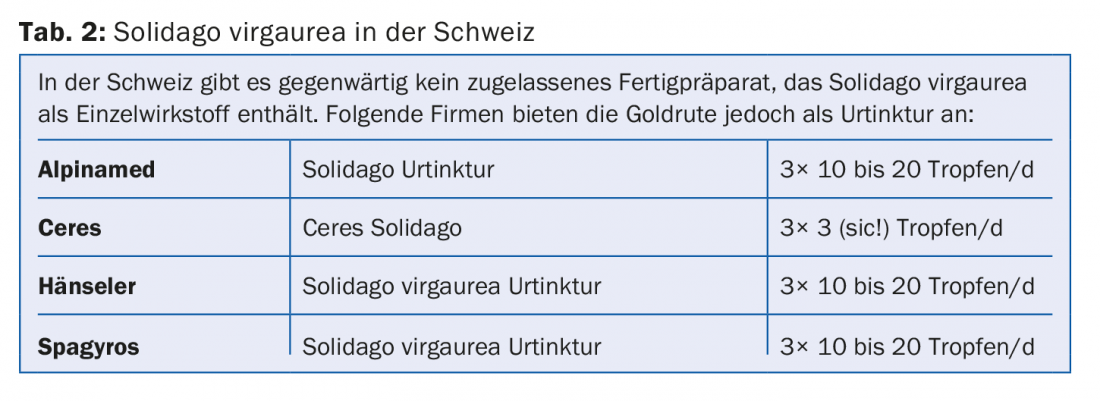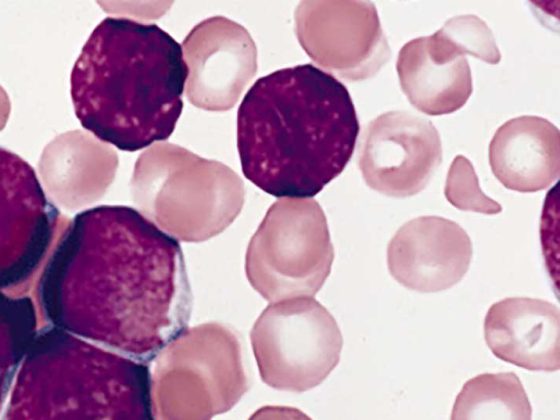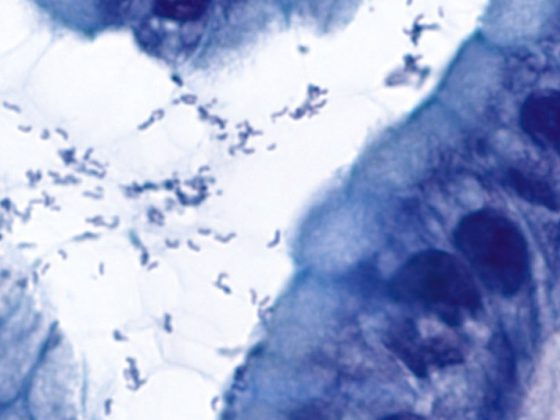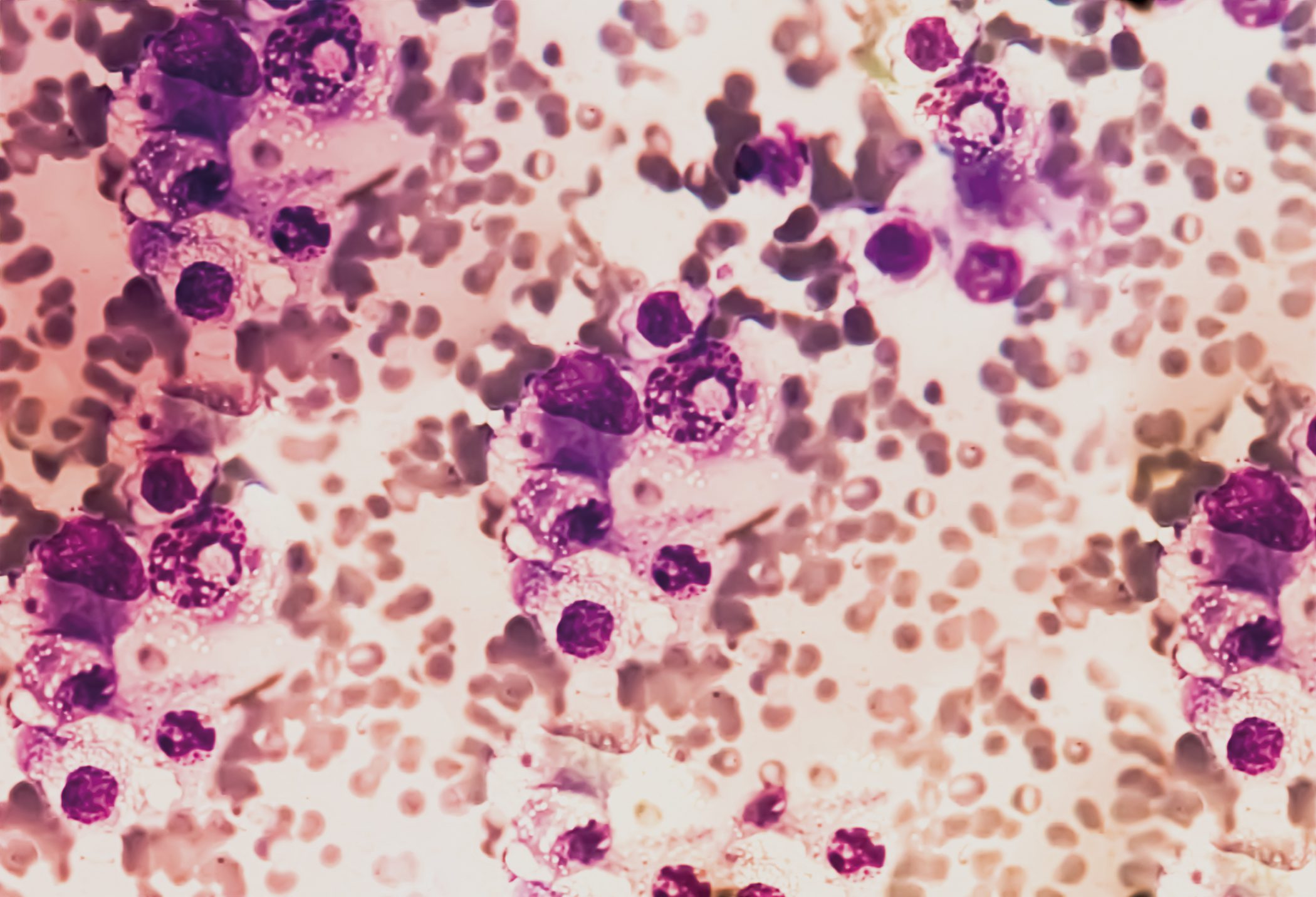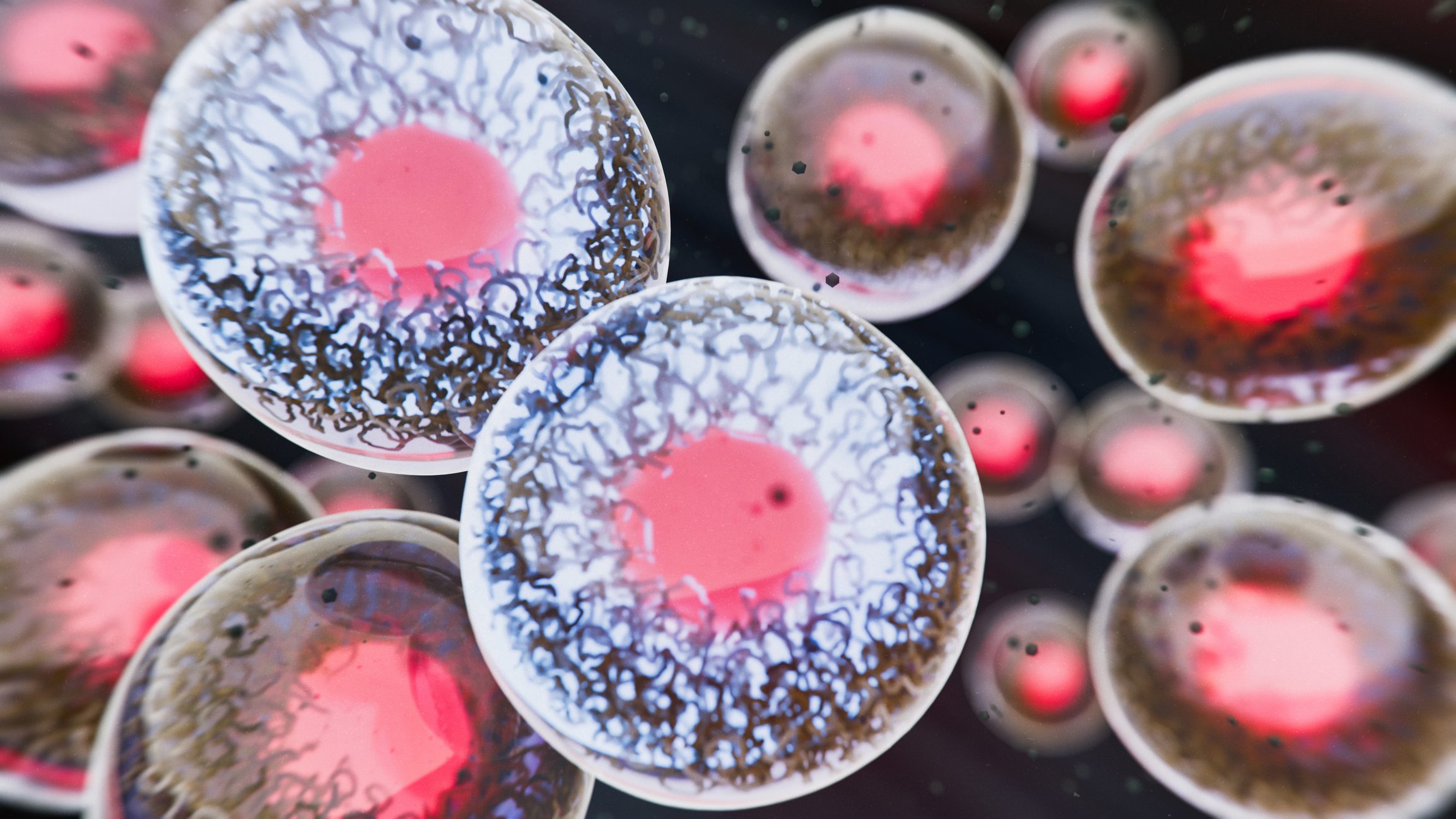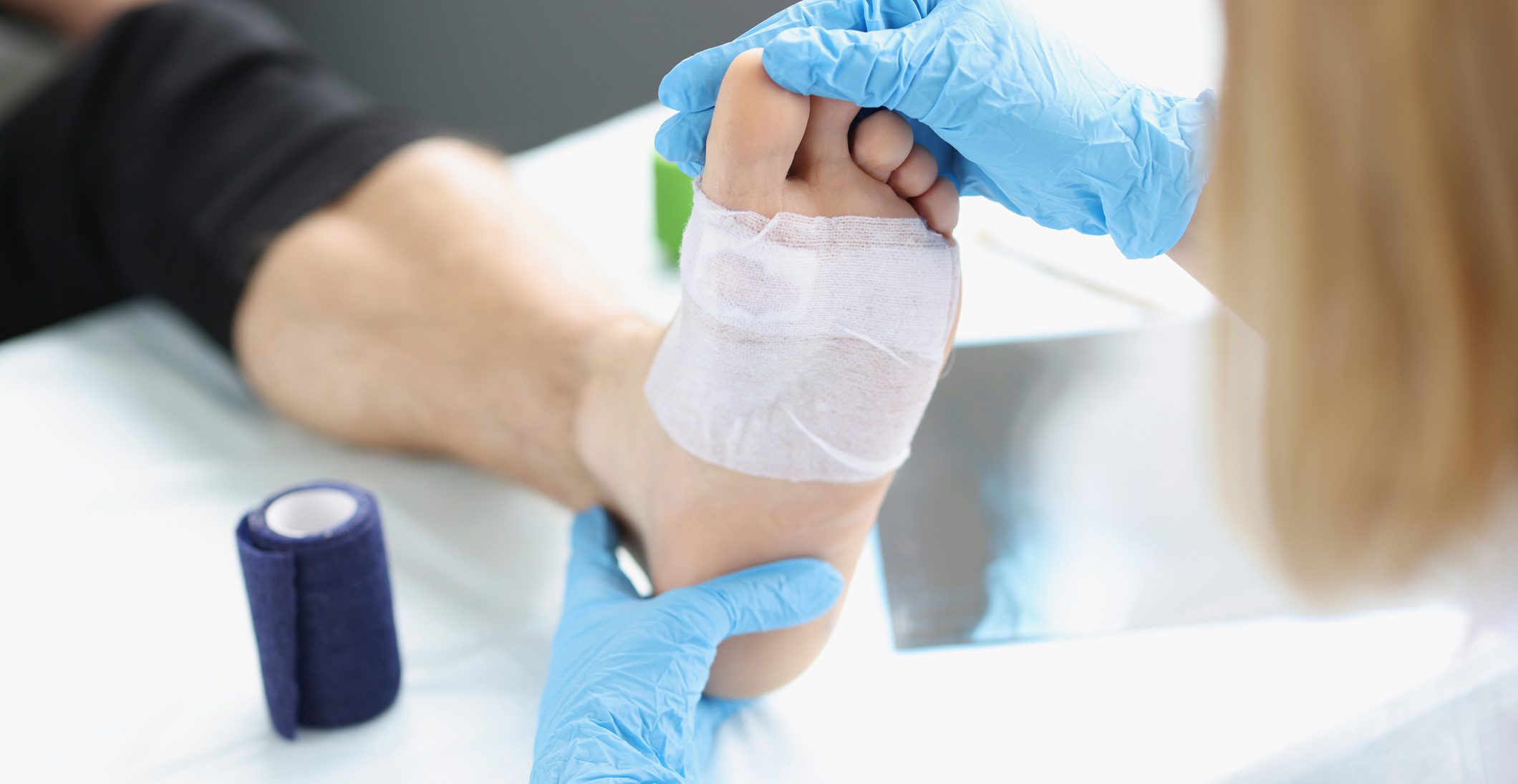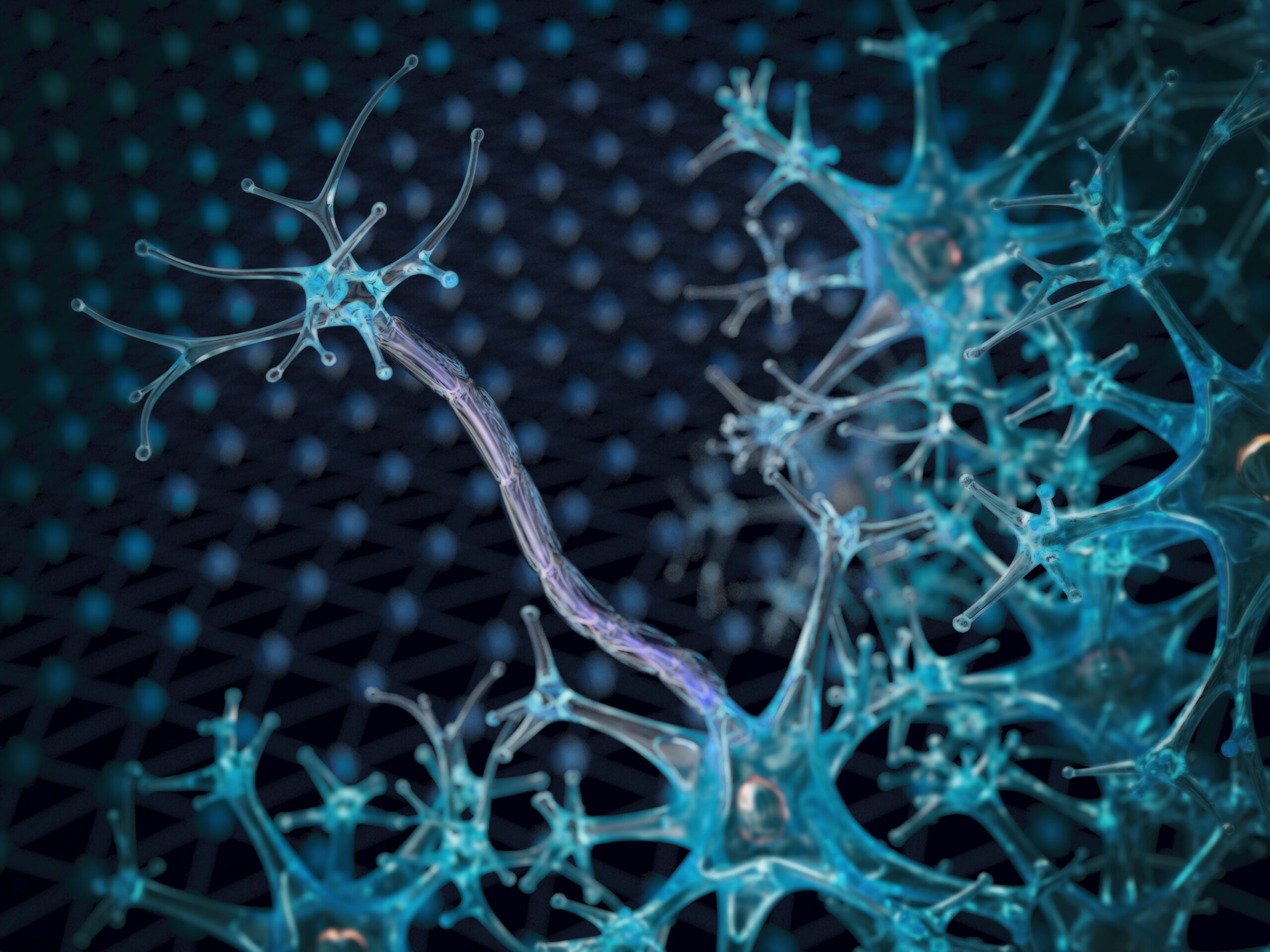Goldenrod is a medicinal plant with a folk medicine tradition that has been used for centuries to treat urinary tract infections. To date, however, there are no studies according to RCT standards that prove their efficacy. Is it still possible to recommend the use of goldenrod?
The common goldenrod (Solidago virgaurea L.) from the daisy family (Asteraceae) is a herbaceous, robust plant that is widespread in Central Europe (Fig. 1). Goldenrod prefers nutrient-poor and rather dry sites, such as roadsides or forest edges. They can also be found in rough pastures. Their range in Europe and Asia is very large. It grows both in arctic zones and in subtropical areas, but there only in the mountains. Different subspecies exist depending on the region.
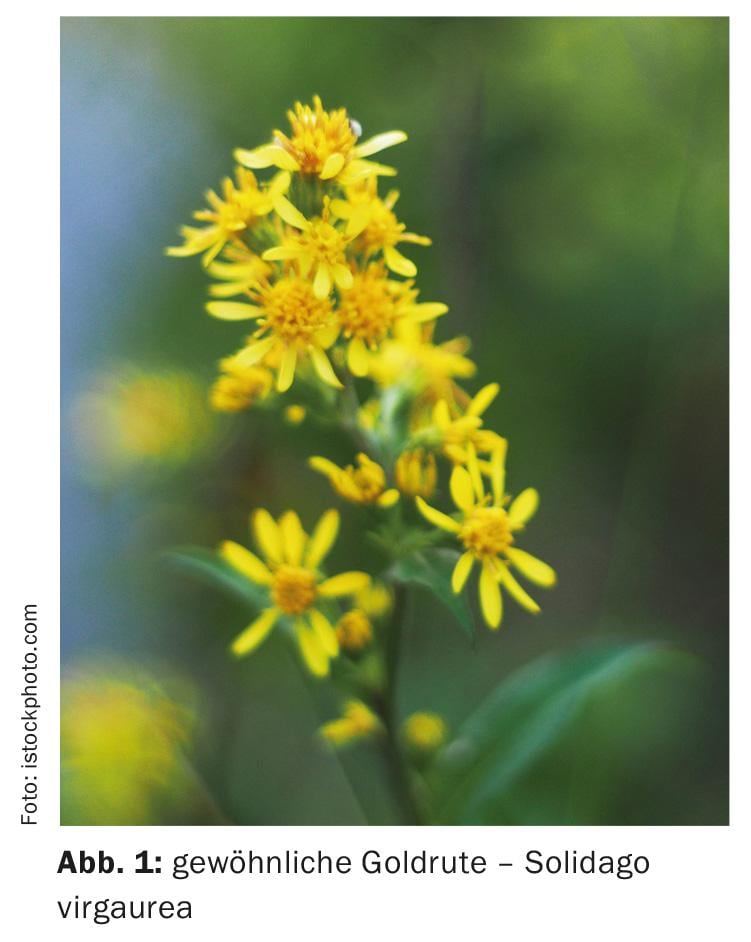
Ingredients
Various ingredients can be extracted from goldenrod. The Guide to Phytotherapy, a standard work on phytotherapy, lists the following ingredients [1]:
- 1-3% flavonoids
- Saponins
- Phenylglycosides
- Tannins
- Essential oil
Of the phenylglycosides, leicarposide and virgaureoside deserve special mention as they serve both as lead substances (for content determination) and as active ingredients. 3,5-dicaffeolyquinic acid, neochlorogenic acid and chlorogenic acid also contribute to this.
Folk medicine significance
In an article published in the Wiener Medizinische Wochenschrift [2], Solidago virgaurea is described as a medicinal plant with a centuries-old tradition with regard to the treatment of urinary tract diseases. In historical records there are references to the range of action: goldenrod is said to have diuretic, weak spasmolytic, antiphlogistic and antibacterial effects.
Commission E as well as the ESCOP and the HMPC of the EMA (Tab. 1) attest a positive effect to the plant. The most recent of these monographs, written by the HMPC, recognizes the “well established use” of the medicinal plant in the treatment of urinary tract infections, but, like the other monographs, cannot point to any corresponding clinical studies. The HMPC monograph recommends the following applications derived from folk medical experience [3]:
- as herb: 2-4×/day 3-5 g dried herb
- as tincture: 3×/day 0.5-2 ml tincture
- as extract: 3×/day 350-450 mg dry extract
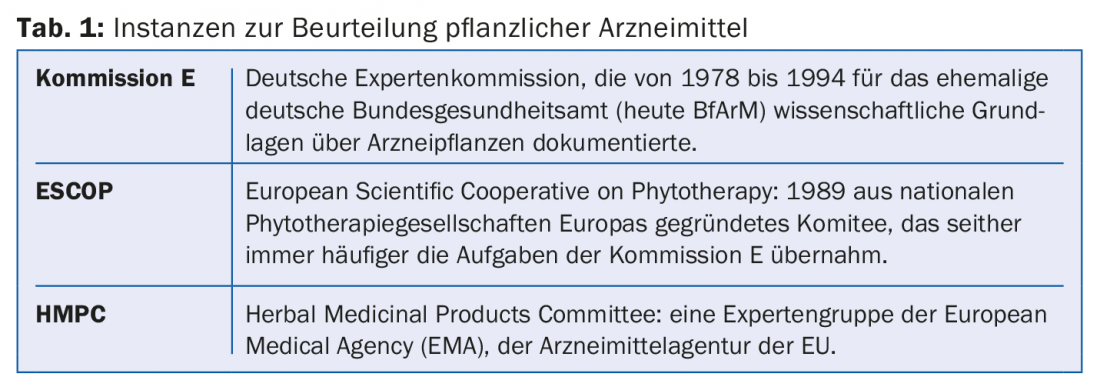
Hardly any studies so far
No studies verifying the medical efficacy of Solidago could be found in Medline. The Phytotherapy Guide mentions four observational studies from 1996 to 2002 [1], which tested the efficacy of various medicines with Solidago as the active ingredient that were approved in Germany. In these observational studies, the efficacy of the herbal preparation was mainly investigated in chronic recurrent urinary tract infections. The study populations were large, ranging from 512 to 3927 patients in each case. Very good to highly significant positive results were reported in all studies. However, the quality of these studies could not be verified, especially since only the mentions in the guide were available, some of which remained vague. An assessment body such as the Cochrane Collaboration, which only accepts RCTs, would not accept such observational studies as scientific evidence of efficacy. Furthermore, the mentioned observational studies date back to a time with less strict study criteria regarding inclusion and exclusion criteria, target parameters, and interpretation of results.
Experiential medicine vs. clinical trials
A purely orthodox medical person would say at this point: “There is no evidence for the effectiveness of Solidago virgaurea. Accordingly, its use must be rejected”. Is this the last word in wisdom? No – because that would merely dismiss as a fallacy the experiential knowledge that has been passed down from generation to generation for centuries. Such a long traditional knowledge about the healing effect of medicinal plants may well be considered as proof of effectiveness.
Nevertheless, caution is advised. For example, a company could market any herbal preparation, e.g. an at first sight interesting combination of different plants, and refer to centuries-old empirical knowledge in the product’s advertisement. This could encourage “quacks”. Even sources of empirical medicine must be critically evaluated and may only be called convincing if there are various credible ones of them, which confirm an application over and over again in the course of the centuries.
The value and necessity of clinical trials is in no way to be denied; on the contrary, clinical trials are an important tool for assessing the efficacy of synthetic and herbal medicines. And it is desirable that health insurers primarily reimburse the costs of preparations whose efficacy has been proven by clinical studies.
If the efficacy of a preparation that has not been tested in clinical studies or clinical trials is to be assessed, the efficacy of the preparation must be evaluated. has only been tested in observational studies, but its active ingredient, in this case Solidago virgaurea, has been described as effective by credible sources for centuries, then this may be accepted as experience-based proof of efficacy. This is because physicians working in practice also base their therapy not only on clinical trials; their own experience, the recommendation of opinion leaders, etc. play a significant role.
Summary
The medicinal use of goldenrod, Solidago virgaurea L., is based on a centuries-old folk medicine tradition as a therapeutic agent for urinary tract infections. This has not yet been scientifically validated with clinical trials, although some observational studies of use around the turn of the millennium confirm efficacy in chronic recurrent urinary tract infections. However, the long folk-medicinal tradition as well as the application observations can be a reason for physicians to prescribe goldenrod as a tincture or mother tincture (Tab. 2), if necessary in combination with other urinary tract-active medicinal plants.
Literature:
- Schilcher H, Kammerer S, Wegener T: Leitfaden Phytotherapie, 3rd edition. Munich: Elsevier, 2007, 113.
- Melzig MF: Goldenrod – a classic in urological phytotherapy. Wien Med Wochenschr 2004; 154: 523-527.
- Committee on Herbal Medicinal Products: Community Herbal Monograph on Solidaginis virgaureae L., Herba. 2008. www.ema.europa.eu/docs/en_GB/document_library/Herbal_-_Community_herbal_monograph/2009/12/WC500018159.pdf. As of 6.8.2018.
HAUSARZT PRAXIS 2018; 13(9): 6-7


